Rare Rides Icons: The History of Kia's Larger and Full-size Sedans (Part V)

In our last installment of Kia’s larger sedan history, we covered the midsize Credos. The Credos was an important first for Kia, as the first midsize the company produced where it had a bit of leeway with the design. Ultimately, the Credos hid its Mazda 626 bones decently well and did a good impersonation of a late Nineties Ford Contour after a refresh.
But just as Kia settled into Mazda platforms and designing their own sedans, the goalposts were moved courtesy of the 1997 Asian financial crisis. Kia was left without much money, and few options. We pick up there.
In 1998 Kia signed a deal with Hyundai, officially an “ownership exchange” between the two firms. Hyundai purchased 51 percent of Kia and became its controlling owner. Ford wasn’t interested in playing second fiddle to Hyundai’s controlling stake, so they sold off the investment they’d held in Kia since 1986 (17 percent). That meant big changes for all Kia’s cars moving forward, and where sedans were concerned it meant no more Mazda platforms or engines.
The timing was critical for the company’s sedan product because both the midsize Credos and full-size Potentia were already due for replacement by the turn of the 2000s. The intended replacement for the Potentia (Enterprise) just found its way to dealers as Kia fell under Hyundai controllership. The Enterprise wasn’t as popular anyway, as it seemed the world rejected the refreshed version of the final Mazda 929 no matter what badge it used.
The more popular but very dated Potentia remained on sale alongside the Enterprise through 2002. Enterprise enjoyed a single year as the company flagship before its replacement arrived. Said replacement was a Hyundai-approved Kia design, on a Hyundai platform. Say hello to Opirus.
Kia expected big things from the Opirus, as did Hyundai. The large executive sedan market in South Korea was long dominated by domestic branded sedans, but this particular car would also need to appeal on a global stage. Neither the prior Enterprise nor Potentia caught on outside a select few export markets. And the Opirus was Kia’s first self-made upmarket car.
Development began early in 2001, as the new front-drive, transverse engine sedan took shape. It was intended to have uniquely elegant styling, and emphasize luxury and comfort over any sense of sportiness. Sort of like a Town Car, but from Korea. The new car’s name was chosen via an online survey, where the two losing names were Regent and Conzern. Opirus was a reference to the Biblical city of Ophir which was known for its wealth.
Development was costly, at $167 million ($286,026,077 adj). A large portion of that (41 percent) went to develop and improve production technology, while 18 percent was spent on research and development. When it was launched, the Opirus became the very first Kia to ride on a Hyundai platform.
A big debut was in order, which happened at the Geneva Motor Show in 2003. It was Kia’s first full-size car on a domestically-sourced platform and the first where they were relatively free to pen their own design. Though the Opirus rode on Hyundai’s third-generation Grandeur platform (XG350 to you) from 1998, it did not share body panels, styling, or hardpoints with the Hyundai. It’s interesting to consider the styling choices made (more below), given Kia had a clean sheet from which to work.
After Geneva, the Opirus made additional appearances at the New York and San Diego shows to better expose it to the American consumer. The North American customer needed to like Kia’s new large car, so it had a name change to fit the continent’s taste: Amanti. The new model added just one additional letter over Mazda’s canceled Amati brand, ironic given the large car history between the two firms.
Hyundai chose to let Kia have their own debut moment with the Opirus. The platform donor third-gen Hyundai Grandeur entered production in 1998 and ran through 2005. That meant the Opirus had three full years to establish itself on the market before a similar Hyundai arrived. Hyundai and Kia had to be very careful not to step on one another’s toes in the home market (and still do). They sold what were essentially the same vehicles to the same market segments, with different styling.
The Opirus was separated from the Grandeur by more than just sheet metal. Kia wanted its premium car to be larger than the Grandeur, so they stretched the platform by 1.9 inches, from 108.3″ to 110.2″. The exterior length was not similar between the two cars: The refreshed Grandeur from ’02 to ’05 was 191.9 inches long, while the Opirus was 196.9″. Grandeur’s width of 71.9 inches was also trumped by the 72.8 of Opirus. And finally, because of its much more formal roof, the Opirus was 58.5 inches high compared to the frameless window Grandeur, at 55.9 inches. With its extra size and emphasis on luxury equipment came extra heft. Opirus started at 3,671 pounds, nearly 500 more than the Grandeur.
To motivate all that weight and luxury were a variety of engines, all of which were V6 displacement. The smallest on offer were two 2.7-liter engines from the Delta and Mu engine families. There were also Sigma line engines in 3.0- and 3.5-liter flavors, as well as 3.3- and 3.8-liter Lambda engines.
In select markets, there was also an LPG version of the 2.7 Mu, called LPi. The Opirus engines were all larger than those offered in the Grandeur, and about half of them were newer designs than offered on the Hyundai. In a nod to its luxury mission, the Opirus went without a manual transmission in any market. Automatics had either five or six forward speeds, one more than Grandeur.
We’ve got to talk about the styling of the Opirus, and your author has been stalling thus far. But how does one begin to detail the elegance and distinction that was the Opirus? One word: Amalgamation. The Opirus drew its styling cues almost entirely from extant luxury sedan designs from other manufacturers.
At the front end, the Opirus had four large oval lamps, much like a Mercedes-Benz E-Class or the second-gen Lexus GS. Betwixt the pairs of lamps was a large egg-crate grille sans any badging, but shaped in the style of the Chrysler 300. Some markets received an Opirus with an even worse grille, that had a thick chrome split down the middle to mimic Mercedes.
Also in chrome were wrap-around trim strips that extended from in front of the front wheel to the lower edge of the grille. The trim looked familiar because it was almost exactly the same as that of the Jaguar S-type. Under the trim and within the lower valance was a very large LED turn indicator, an early implementation of the new lighting technology.
Opirus’ sloping hood grew sculpted toward the front end to highlight the E-Class lamps, and the front fenders followed suit with their shape. Down the side of the new Kia, there was not much detailing to be found: Gently rounded metal was inoffensive and plain. However, the roof was tall and sloped downward sharply at the rear window. The effect was to create a roofline almost exactly like a Lincoln Town Car.
After all the cut and paste, the Opirus’ rear was a bit of independent design. It didn’t look like anything in particular and was sort of detached from the other two-thirds Euro-American look. A basic upright sedan trunk blended into a bumper that repeated the chrome trim design from the front wrapped entirely around the rear end. Tail lamps were a horizontal design and did not look good. They had a Kia-like appearance, which was fitting as shiny Kia and Opirus/Amanti badging appeared on the trunk.
Kia knew the rear end of the Opirus was an issue and refreshed it for the 2007 model year. Lamps were then vertically oriented and followed a new rear trunk line. The new lenses were not dissimilar to what one saw on a Maserati Quattroporte. The new rear end looked more upscale and brought with it a couple of new wheel designs.
The front end’s transition in the update was much more subtle, as the grille’s egg-crate got a bit tighter, and the indented surround formed by the bumper was softened considerably. The split grille design in use in various markets also went away with the refresh.
Media reviews were not kind to the Opirus at debut, largely because of its styling. They called it unoriginal and derivative if they were feeling salty, or conservative and neo-classical if they were having a good day. In North America, the Amanti was marketed to professional people who were over age 40 and enjoyed a good value (sounds like an Avalon customer). J.D. Power awarded the Amanti with its Most Appealing Premium Midsize Car ribbon in 2005, within its Automotive Performance, Execution, and Layout study. That same year, Amanti was available in one well-equipped trim for $26,140 ($39,629 adj.), almost the exact starting point of the Avalon.
Opirus held its value proposition in the sheer amount of standard equipment. Leather (usually) and wood grain abounded, as well as power everything, a CD player, dual-zone climate control, and a bevy of eight airbags. An Infinity stereo system was optional, as was a central climate LCD screen, and adjustable pedals. There was also a real clock, powered front seats, and a standard moonroof. Opirus was the first Kia to have electronic stability control (ESC) and implemented a system Kia developed with the assistance of Continental.
Cloth upholstery was available for entry-level buyers and sported a herringbone pattern. The interior received more luxury with the 2007 refresh when the wood grain gained a darker look. That same year, gauges received electroluminescent lighting like Lexus used in the GS. Rear seat heaters also arrived with the refresh, to improve all passengers’ lots in life.
All examples in North America used the same 3.5-liter Sigma engine, good for 200 horsepower and 220 lb-ft of torque. And for the mid-00s, 200 horses from 3.5 liters was about 80 short of competitive. The six-speed automatic was off-limits to the US and Canada as well.
The Amanti was not a great success in North America, as aged premium car buyers turned anywhere else for their cars. Thus it was offered only through 2009 locally and continued on through 2012 in other global markets. Though all Kia-built examples were made in South Korea at the Hwasung Plant, it was also built under license by Avtotor in Russia.
Kia took some time off from offering a full-size car in North America, as it steadied itself and prepared to come back later. Elsewhere in the world, the Opirus was replaced by the K7, or what you might call the Cadenza. Next time we’ll head back to the midsize segment, and cover Kia’s first offering designed under Hyundai’s watchful ownership.
[Images: Kia]

Interested in lots of cars and their various historical contexts. Started writing articles for TTAC in late 2016, when my first posts were QOTDs. From there I started a few new series like Rare Rides, Buy/Drive/Burn, Abandoned History, and most recently Rare Rides Icons. Operating from a home base in Cincinnati, Ohio, a relative auto journalist dead zone. Many of my articles are prompted by something I'll see on social media that sparks my interest and causes me to research. Finding articles and information from the early days of the internet and beyond that covers the little details lost to time: trim packages, color and wheel choices, interior fabrics. Beyond those, I'm fascinated by automotive industry experiments, both failures and successes. Lately I've taken an interest in AI, and generating "what if" type images for car models long dead. Reincarnating a modern Toyota Paseo, Lincoln Mark IX, or Isuzu Trooper through a text prompt is fun. Fun to post them on Twitter too, and watch people overreact. To that end, the social media I use most is Twitter, @CoreyLewis86. I also contribute pieces for Forbes Wheels and Forbes Home.
More by Corey Lewis
Latest Car Reviews
Read moreLatest Product Reviews
Read moreRecent Comments
- Teddyc73 Doesn't matter, out of control Democrats will still do everything they can to force us to drive them.
- Teddyc73 Look at that dreary lifeless color scheme. The dull grey and black wheels and trim is infecting the auto world like a disease. Americans are living in grey houses with grey interiors driving look a like boring grey cars with black interiors and working in grey buildings with grey interiors. America is turning into a living black and white movie.
- Jalop1991 take longer than expected.Uh-huh. Gotcha. Next step: acknowledging that the fantasies of 2020 were indeed fantasies, and "longer than expected" is 2024 code word for "not gonna happen at all".But we can't actually say that, right? It's like COVID. You remember that, don't you? That thing that was going to kill the entire planet unless you all were good little boys and girls and strapped yourself into your living room and never left, just like the government told you to do. That thing you're now completely ignoring, and will now deny publicly that you ever agreed with the government about.Take your "EV-only as of 2025" cards from 2020 and put them in the same file with your COVID shot cards.
- Jalop1991 Every state. - Alex Roy
- CanadaCraig My 2006 300C SRT8 weighs 4,100 lbs. The all-new 2024 Dodge Charge EV weighs 5,800 lbs. Would it not be fair to assume that in an accident the vehicles these new Chargers hit will suffer more damage? And perhaps kill more people?




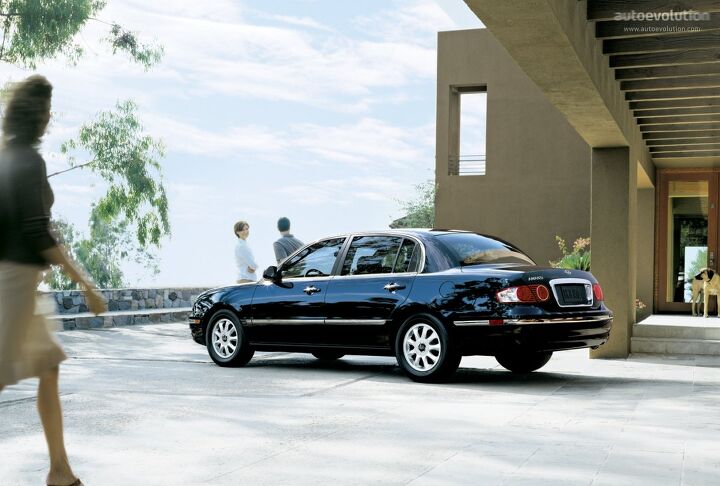






















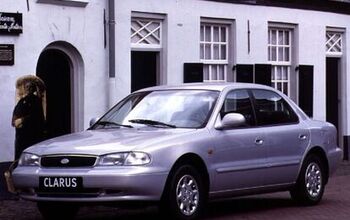
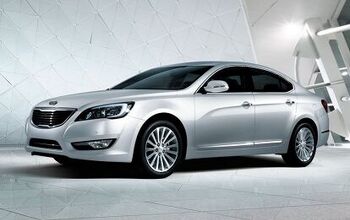
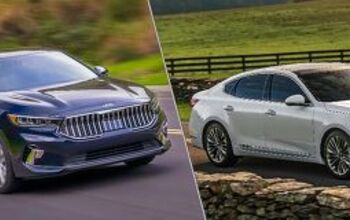
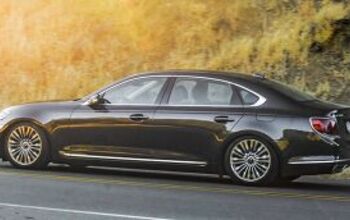
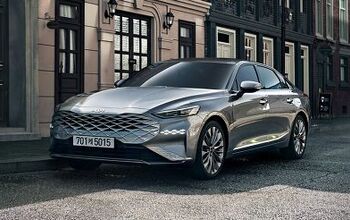










Comments
Join the conversation
Speaking of embarrassingly derivative, whole sections of this article are directly cribbed from the Opiris Wikipedia article.The rest is mostly the author's derisive opinion -- not actually journalism. TTAC should probably rethink their name.
good